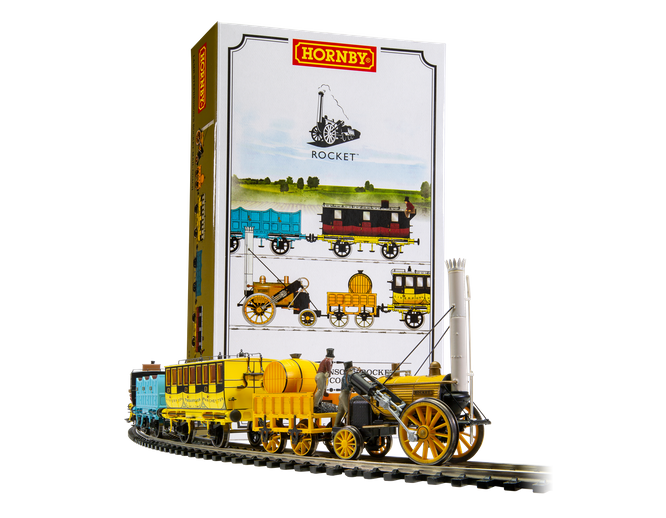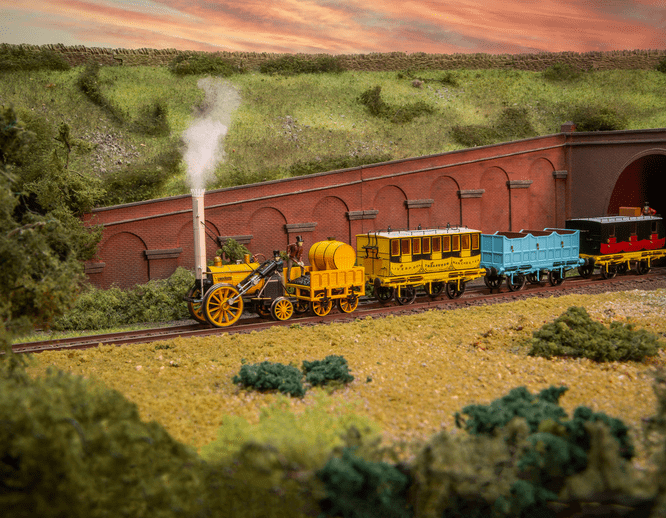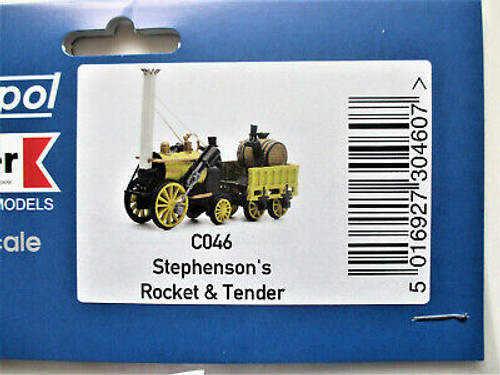Product Description
Hornby R3956 L&MR Stephenson's Rocket Mail Coach train pack


L&MR, Stephenson's Rocket Royal Mail Train Pack - Era 1
- 1:76 Scale
- 4 Products included
- 6 Pin Socket
- Kick off your Era 1 collection with a full train in a pack
- The stock in this pack utilises fine scale realistic chain couplings
- Pack features the unique Royal Mail Coach
L&MR Stephenson's Rocket Mail Coach
The L&MR Stephenson’s Rocket Royal Mail Coach features a striking yellow, black and red livery, which complements the existing first class coaches. The Royal Mail Coach is placed at the back of the passenger train with a guard seated high up on a special seat in order to keep an eye on the cargo. As the first specifically designed Mail Coach to be used on a railway, paved the way for a long-standing relationship between railways and the mail.


Highest Class of Travel
Designed and built following an invitation to the Rainhill Trials, this pioneering locomotive was used to haul the first intercity passenger trains between Liverpool and Manchester. Featuring a stunning new pack, including the First-Class coach ‘Treasurer’, a 3rd Class Open Carriage and an eye-catching Royal Mail carriage complete with a guard, this much-loved model is sure to stand out and look amazing in any collection or on any layout!
*The steam featured in the image was digitally applied for visual enhancement only. The model does not include a steam generator.
Product Info
Rocket was designed and built as a direct response to the invitation to the Rainhill Trials issued by the Directors of the Liverpool and Manchester Railway on April 25, 1829 for "a Locomotive Engine, which shall be a decided improvement on any hitherto constructed, subject to certain stipulations and conditions.” Initially known as the Premium Locomotive Engine, design and development work on the locomotive took place at Robert Stephenson & Co's Newcastle factory and while George Stephenson is acknowledged as the engineer responsible for Rocket, much of the work was carried out by his son Robert, in conjunction with his draftsman George Phipps and Works Manager William Hutchinson.
Rocket was completed to Robert Stephenson's satisfaction on September 2, 1829 and was transported to Killingworth Colliery for steam and load haul testing prior to the Rainhill Trials. Rocket's livery of yellow and black, with a white chimney, mirrored that of the L&MR's existing first class coaches which, in turn, copied that of the fastest road coaches at the time and was chosen by George Stephenson in 1828 to suggest speed and reliability to a new class of travelling public. The outcome of the Rainhill Trials established Rocket as the clear winner and the L&MR Board awarded Robert Stephenson and Co. the contract to produce four further 'Rocket' type locomotives, all of which were to incorporate improvements highlighted by the Rainhill Trials. Over the next three years, Rocket itself was gradually improved, until February 1833 when the locomotive was relegated to secondary and standby duties.
Rocket was purchased by Thompson & Sons of Kirkhouse for operating mineral trains on the Brampton Railway, but could not cope with the heavy trains and was withdrawn from service in 1840. In 1850 Rocket was moved to the Newcastle works of Robert Stephenson & Co. and in 1862 was donated to the Patent Museum, the forerunner of the Science Museum, by the Thompson family.
Upon the opening of the Liverpool and Manchester Railway in 1830 an agreement was made to carry mail on the railway. A royal mail coach would be placed on the end of a train with a guard seated high up on a special seat at the back of the coach keeping a watchful eye.
Additionally, this set also features the carriage ‘Treasurer’ and an open carriage.














